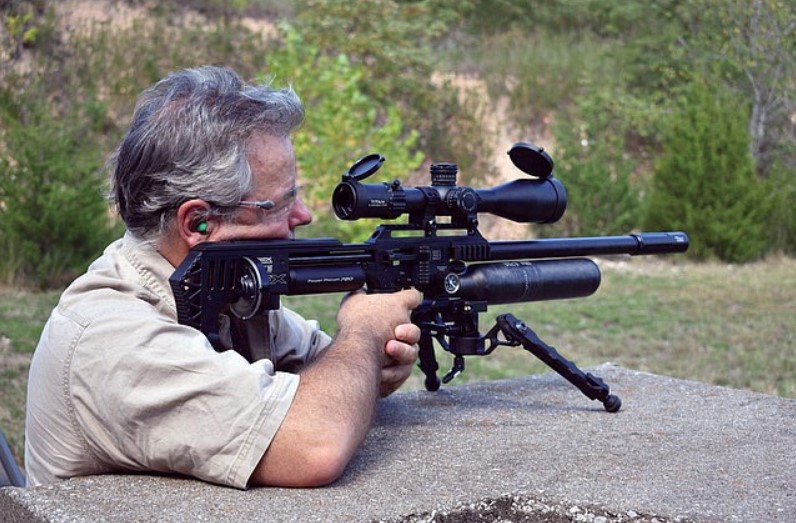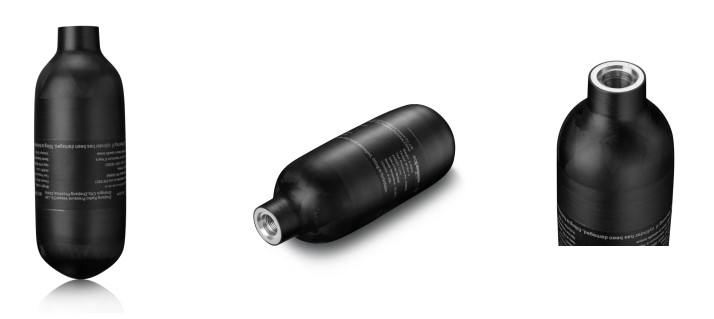Pre-Charged Pneumatic (PCP) air rifles have gained popularity for their accuracy, consistency, and power, making them an appealing option for both hunting and target shooting. Like any piece of equipment, however, they come with both benefits and drawbacks. This article will explore the pros and cons of PCP air rifles, with a particular focus on the role of carbon fiber composite cylinders in these rifles. We will discuss how carbon fiber cylinders enhance performance and provide insights into the maintenance and cost considerations associated with this type of air rifle.
Understanding PCP Air Rifles
PCP air rifles operate using compressed air stored in a high-pressure cylinder. When the trigger is pulled, a valve opens and releases a small amount of this compressed air to propel the pellet down the barrel. This mechanism allows for multiple shots to be fired before needing to refill the air cylinder, providing consistent performance with minimal recoil. The air in these rifles can be compressed to high pressures—often between 2,000 and 3,500 psi (pounds per square inch).
Benefits of PCP Air Rifles
1. High Accuracy and Power
One of the most significant advantages of PCP air rifles is their ability to deliver highly accurate shots with minimal variation between each shot. The consistency in air pressure between each shot allows for repeatable performance, a key factor in precision shooting. This makes PCP air rifles ideal for long-range shooting and hunting.
In terms of power, PCP air rifles can generate higher velocities and muzzle energy than most spring-piston or CO2-powered air rifles. This increased power makes them more effective for hunting small to medium-sized game.
2. No Recoil
Another benefit of PCP air rifles is their lack of recoil. Unlike spring-powered air rifles that rely on mechanical components to generate the necessary force, PCP rifles use compressed air, resulting in virtually no recoil. This helps maintain accuracy, especially during rapid-fire shooting or when aiming at smaller targets.
3. Multiple Shots per Fill
PCP air rifles can provide numerous shots per fill of the air cylinder. Depending on the rifle and the size of the air cylinder, shooters can often fire 20 to 60 shots (or more) before needing to refill the cylinder. This is especially useful during extended hunting trips or target shooting sessions where frequent recharging would be inconvenient.
4. Lightweight Carbon Fiber Cylinders
Carbon fiber composite cylinders play a key role in enhancing the performance of modern PCP air rifles. Compared to traditional steel cylinders, carbon fiber cylinders are much lighter, allowing the rifle to be more maneuverable and less tiring to carry during long hunts. Carbon fiber also offers superior durability, as it is highly resistant to corrosion and wear. These cylinders can withstand higher pressures, which increases the number of shots available per fill and boosts overall performance.
Disadvantages of PCP Air Rifles
1. High Initial Cost
One of the major drawbacks of PCP air rifles is the high initial cost. These rifles are generally more expensive than other types of airguns, such as spring-piston or break-barrel air rifles. The high cost stems from the technology required to operate at high pressures, the quality of materials used (like carbon fiber cylinders), and the precision engineering involved in their design.
Additionally, PCP air rifles require specialized equipment for filling the air cylinders. This may include hand pumps, scuba tanks, or dedicated high-pressure compressors, all of which can add to the initial investment. While the performance benefits may justify the cost for serious shooters, it can be a barrier to entry for beginners.
2. Complexity and Maintenance
PCP air rifles are more complex than other types of airguns, which can make maintenance more challenging. The high-pressure system and various internal components require regular inspections and servicing to ensure safe and reliable operation. Leaks, wear, or contamination of the air system can reduce the rifle’s performance or even render it inoperable.
Carbon fiber cylinders, while highly durable, also need to be carefully maintained. They must be periodically inspected for signs of damage or deterioration, as their high-pressure capabilities make them a critical component in the rifle’s performance. While these cylinders typically have a long service life (often 15 years or more), proper care is essential to ensure their longevity.
3. Air Supply Dependency
A key disadvantage of PCP air rifles is their dependency on an external air supply. Shooters need access to a reliable source of compressed air, whether through a hand pump, scuba tank, or compressor. This can be inconvenient, especially in remote areas where refilling the cylinder might not be possible. Moreover, hand pumps can be physically demanding and time-consuming to use, while compressors and scuba tanks represent additional costs and logistical concerns.
4. Weight and Portability Concerns
Although carbon fiber cylinders significantly reduce the weight of PCP air rifles, the rifles themselves can still be heavier than simpler models like CO2 or spring-piston air rifles, especially when factoring in the air supply equipment needed. This can be a disadvantage for users who prioritize lightweight gear for easy transportation during long hunting trips.
Carbon Fiber Composite Cylinders: Enhancing PCP Air Rifles
Carbon fiber composite cylinders have become increasingly popular in PCP air rifles due to their lightweight and high-strength properties. These cylinders are made by wrapping carbon fiber filaments around an aluminum or polymer liner, creating a vessel that can withstand high pressures while remaining lightweight and portable.
1. Lightweight and Durable
The primary benefit of carbon fiber composite cylinders is their reduced weight compared to traditional steel cylinders. This makes them ideal for shooters who need a rifle that’s easy to carry and handle. Despite their lightweight construction, these cylinders are highly durable, offering excellent resistance to impact and environmental conditions, such as moisture and temperature changes.
2. Increased Pressure Capacity
Carbon fiber cylinders also have a higher pressure capacity than steel cylinders, typically capable of holding up to 4,500 psi or more. This increased capacity means more shots per fill, which enhances convenience and reduces the frequency of refilling. This is particularly beneficial for hunting trips or long shooting sessions where access to a refill station may be limited.
3. Long Service Life
While carbon fiber cylinders require careful maintenance and periodic inspections, they have a long service life, often lasting up to 15 years. Proper care, including regular inspections and avoiding exposure to harsh environments, can help ensure that these cylinders remain safe and effective for many years of use.
Conclusion
PCP air rifles offer significant advantages in terms of accuracy, power, and versatility, making them a preferred choice for serious shooters. Carbon fiber composite cylinders further enhance these rifles by providing a lightweight, durable, and high-pressure solution that improves overall performance and usability. However, the complexity, cost, and air supply requirements of PCP air rifles may not suit everyone. Balancing the benefits and drawbacks is essential for those considering a PCP air rifle, particularly when factoring in the long-term value of carbon fiber technology in improving shooting experiences.
Post time: Sep-04-2024


